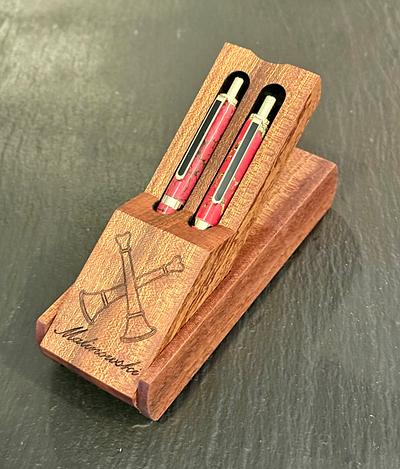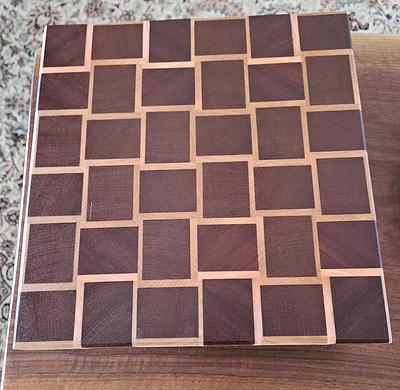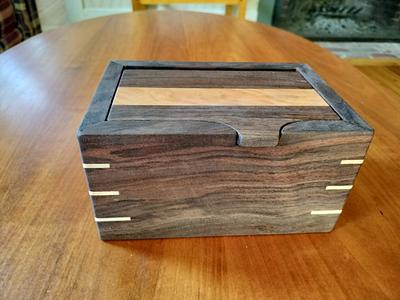Share your craft projects
Make new craft buddies
Ask craft questions
Blog your craft journey
A Brief History of the Woodworking
People have been working with wood for a long time. In fact, the oldest known wooden object is a Clovis point found near Folsom, New Mexico and dated to about 10,000 years ago. It's hard to say what people were doing before that because there are no surviving objects from this period. Wood was used in many ways including weapons, tools and furniture during the Stone Age (2 million-10 thousand BC). This article discusses how woodworking has changed over time since then.
The history of woodworking can be traced back to the early Egyptians
The Egyptians are credited with being the first to use their ability to hand tools for carving wood to produce art objects.
Egyptian tomb paintings show carvings that were created around 2600 BC. Most of these carvings depict religious scenes or paintings that were painted on walls. Evidence of Egyptian stone work shows they used chisels made from stones to carve wood.
It is estimated that around 2000 BC, during the height of Ancient Egyptian civilization, they exported over 1/2 million logs of cedar each year. The Egyptians bartered this wood for other goods like corn , pottery and copper .
They also used lumbers from cypress trees in their temples. No one knows for sure how they squared the logs, but one possibility is that they drove stakes into the ground and then fastened the logs to them.
There are no records of any tools used by the Egyptians in their woodworking practices. The word "saw" does not appear in ancient Egyptian hieroglyphics either.
It is believed Senusret IV used the first saws , which were made of copper.
The Bronze Age (3300 BC - 600 BC) was the second era in the three-age system created by scholars where tools of war and agriculture dominated society. At this time, copper had replaced stone as a medium to work wood. The axe, shovel and rake had been invented. The plow was first developed during this era.
New metals were discovered which led to the development of tools for woodworking. Beech, elm and oak trees became plentiful for making timber products. Woodwork began with felling trees by axes, saws or adzes. The logs were shaped by splitting them with wedges or fire and stone tools.
The Iron Age (1200 BC - 800 AD) was the third era in the three-age system of Western culture. The Iron Age developed from a slow spread of iron working technology that began in Asia Minor around 1200 BC. At this time, metals were used to produce tools for cutting wood.
Iron is stronger than bronze and capable of being sharpened more finely. This new technology led to the development of saws that were capable of cutting iron.
Saw blades began appearing in carvings from this time period. In one carving, a saw blade is even used to cut a curved line.
The Romans (800 BC - 500 AD) built an empire with advanced technology and scientific advancements. They replaced the stone and bronze axes used by the Egyptians with iron axes. These axes were capable of turning out wooden beams with a high degree of accuracy.
Roman carpenters had developed a system of measurement and numbering that is similar to the modern system we use today. The Roman foot was one-twelfth of the total length (11.6 inches).
The Egyptians did not use windows in their structures, but the Romans used them extensively. They made windows out of frame and pulley systems that were capable of opening and closing for ventilation . The Romans also developed glass making techniques to produce clear glass by heating sand with various materials, which produced different colors.
The Dark Ages (500 AD - 1000 AD) followed the collapse of the Roman Empire and lasted until approximately 1000 AD.
During this time, Europe was in serious decline and progress in all areas of human endeavor stagnated. Art, architecture and experimental science declined. This era saw a small rise in technology that led to improvements in agriculture .
The Middle Ages (1135 - 1485) was an era that started with a population decline and feudalism. Feudalism was a political and economic system based on the holding of land in exchange for service or labor. They plowed open fields by dragging wooden plows behind animals.
Woodworkers began producing items such as barrels, boxes, furniture , wine casks and ships. There were some advances in construction during this time. A type of scaffolding was used to make masonry walls and the first floor joists were added to prevent the walls from spreading apart.
The Renaissance (1485 - 1660) was a period that started with a rebirth or revival of classical Greek and Roman culture . There was an increased desire for learning and the arts flourished during this time. The use of machines for making products became common at this time.
The invention of the printing press around 1440 led to a cultural explosion . Newspapers, magazines, books , posters, pamphlets and even photographs could be reproduced in volume with little cost or effort. This led to an increase in literacy, learning and the sharing of information.
The Age of Discovery (1870 - 1914) was an era that started with the invention of new technologies for doing things such as mass producing goods, large ships capable of long voyages, firearms with increased firepower and new methods for treating illnesses.
Woodworking skills improved at this time due to new tools and machinery that made creating furniture easier and faster.
The 20th century (1915-Present) is the last century in our three-age system. It started with widespread use of automobiles, improvements in aircraft and radio technology and continued with television , interstate highways, computers and the Internet.
Woodworking became a hobby during this time and new tools and machinery were developed that made creating furniture easier and faster than ever before.
Over time, the tools used for woodworking have evolved and improved
Woodworking requires a few basic hand tools but most are variations of implements that have been around for centuries . The only new tool that has really caught on is the table saw . It is possible to make all kinds of furniture without owning any power tools at all.
A list of the most important woodworking tools are presented below in historical order beginning with the oldest ones.
Man began making tools out of rocks very early in our history. This is probably because earth was abundant and they were easily found wherever humans lived at that time.
The oldest known tools were discovered in Africa and date back to between two and three million years ago. Stone Age man used rocks for hunting and cutting meat and vegetables. Their tools were made by hand but they were able to produce very sharp edges on their knives by heating the rocks over a fire and then cooling them quickly with water.
Hammers such as the one pictured above were used by cavemen to create rudimentary weapons and tools from rocks and bones. Other early stone tools included axes, chisels, scrapers and maces. These items were not able to be produced quickly or easily but they could be crafted with a reasonable degree of accuracy.
There is some debate over who first made the wheel. Many experts feel it was invented in Mesopotamia about 5,000 BC. The wheel is widely considered to be one of the most important inventions of all time . It is difficult to imagine our world without them.
The wheel was used for many purposes including transportation , turning pottery on a wheel and using millstones to grind grain.
Other early tools and implements were the anvil (a large piece of iron with a flat top), tongs, chisels and saws.
The oldest known example of a hammer is about 30,000 years old. Hammers have been used to shape wood for thousands of years.
Woodworking tools such as chisels would be easily made out of rocks. Rocks however, are not very durable and therefore cannot be reshaped or sharpened once they become dull. Soft metals such as bronze were able to be heated and shaped into different kinds of tools . They could also be used to create more precise weapons than what was produced with stone alone.
Bronze Age man developed blacksmithing and was able to make items such as farm implements, buckets and other household items.
Iron is a very hard metal that can be heated and shaped into different tools . The Romans were the first civilization to use iron on a large scale for making coins , weapons, tools and building materials. Iron has an advantage over stone or bronze because it can be sharpened or reshaped when it is too dull to use.
The Romans invented the iron plowshare in 500 BC. They were able to make long, thin metal shafts for chariots called axles . The axles could be used in weapons such as spears , darts and arrows. The Romans also made tools with steel such as axes, hammers and crowbars.
Iron has been used for making tools since the Iron Age but it is not as strong as bronze or steel. In 1709, cast iron was developed which gave us a much stronger metal to work with. The first known use of cast iron by woodworkers was in 1778 when an English ironmaster patented a machine that could produce large numbers of cast iron pulleys for use in grist mills.
The oldest known example of a saw dates back to about 5000 BC. The first hand-powered saws date back to the Stone Age era . A stone saw from this time period is composed of two pieces of sandstone that are tied together around a piece of bone as shown in the image below.
Modern tools such as chisels, planes, plows and saws are still used today but they have undergone many design changes over the centuries. The steel in modern hand tools is much harder than iron or bronze which allows it to hold an edge longer . It has taken woodworkers thousands of years to learn how to make better tools but tomorrow's tools are only limited by the imagination of the person who makes them.
Learning how to work with wood is a skill that can be passed down from one generation to the next
Woodworking is a skill that has been around for centuries. It can be passed down from one generation to the next, teaching people how to work with wood and create beautiful pieces of furniture or other items. If you are interested in learning this craft, there are plenty of resources available online and in your local community. With a little practice, you too can become a master woodworker and create stunning pieces of furniture that will last for generations.




















